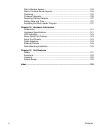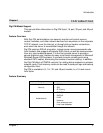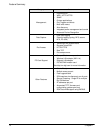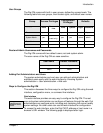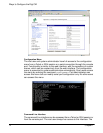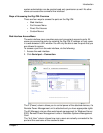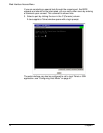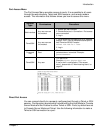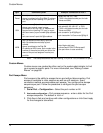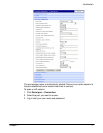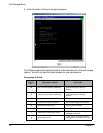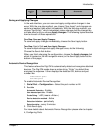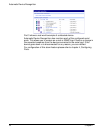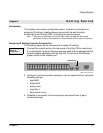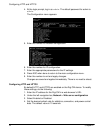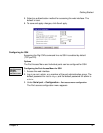
Custom Menus
16 Chapter 1
Note: The example assumes that the Listening TCP port is 7003, the default for port 3.
Custom Menus
Custom menus are created by either root or the system administrator to limit
your access to specific ports. For more information, see "Making Custom
Menus" on page 69.
Port Escape Menu
Port escape is the ability to escape from a port without disconnecting. Port
escape is available in main sessions as well as sniff sessions. Every
connection method accommodates port escape. You configure the escape
sequence per port. Follow the procedure to configure the port escape
sequence.
1. Serial Port > Configuration > Select the port number or All.
2.
Host mode configuration > Port escape sequence - enter a letter for the Port
escape sequence. The default is <ctrl> z.
3. Click Save to flash and continue with other configurations or click Save & apply
for the changes to take effect.
Type Command Syntax Example: Connection to Port 3
Telnet
telnet ip-address tcp-port
where ip-address is the Digi CM’s IP address
and tcp-port is the Listening TCP port for a
port
telnet 192.168.15.7 7003
(7000 is the default socket port for both
Telnet and SSH)
SSH
ssh user-name@ ip-address tcp-port
where user-name is a user’s name,
ip-address is the Digi CM’s IP address and
tcp-port is the Listening TCP port for a port
ssh user-name:”p=port-number”@ip-address
or
ssh user-name:”t=port-title”@ip-address
ssh admin@ 192.168.15.7 -p 7003
(7000 is the default socket port for both
Telnet and SSH)
ssh sunadmin:”p=25”@Digi12
ssh ciscoadmin:”t=Cisco-main”@Digi12
WEB
http://ip-address/connect.asp?t=port-title
http://ip-address/connect.asp?p=port-
number
where ip-address is the Digi CM
IP address or NDS name, port-number is the
number of the serial port and port title is the
name of the port as assigned in serial port,
port title.
http://digicm.digi.com/
connect.asp?t=CISCO.Router.port3
(the port name is case sensitive)



